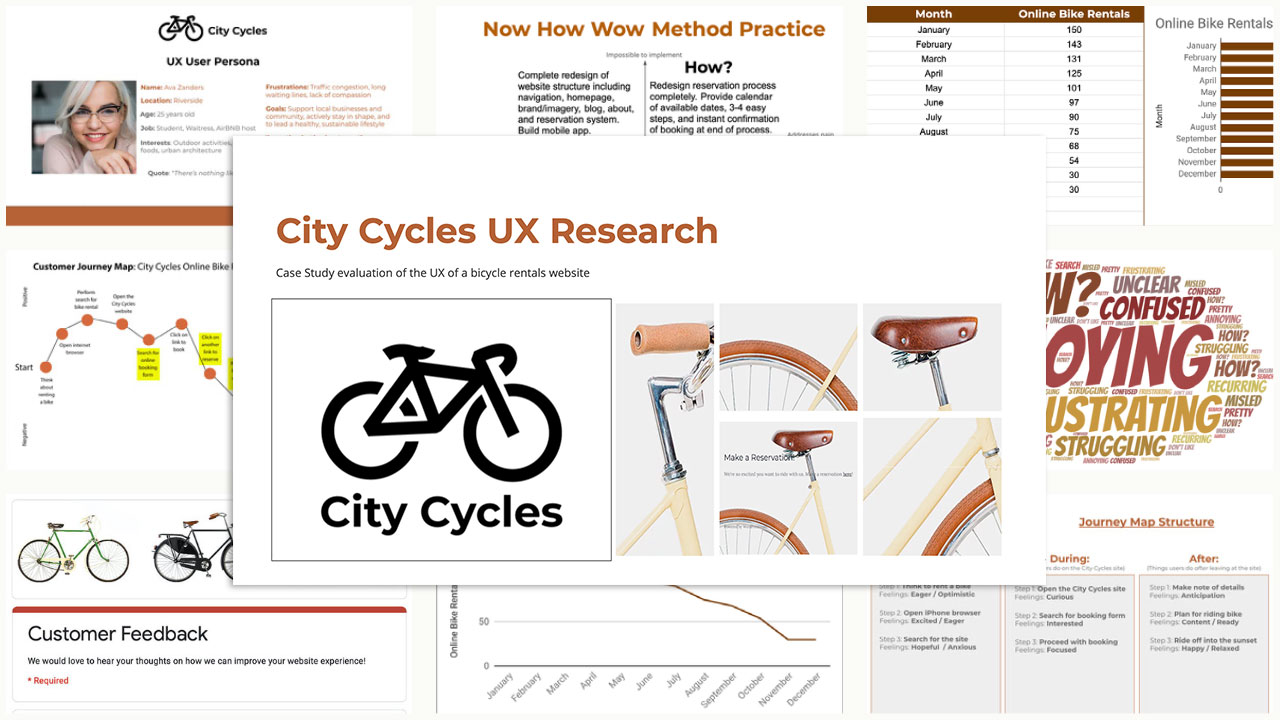City Cycles | UX Information Architecture & Prototyping
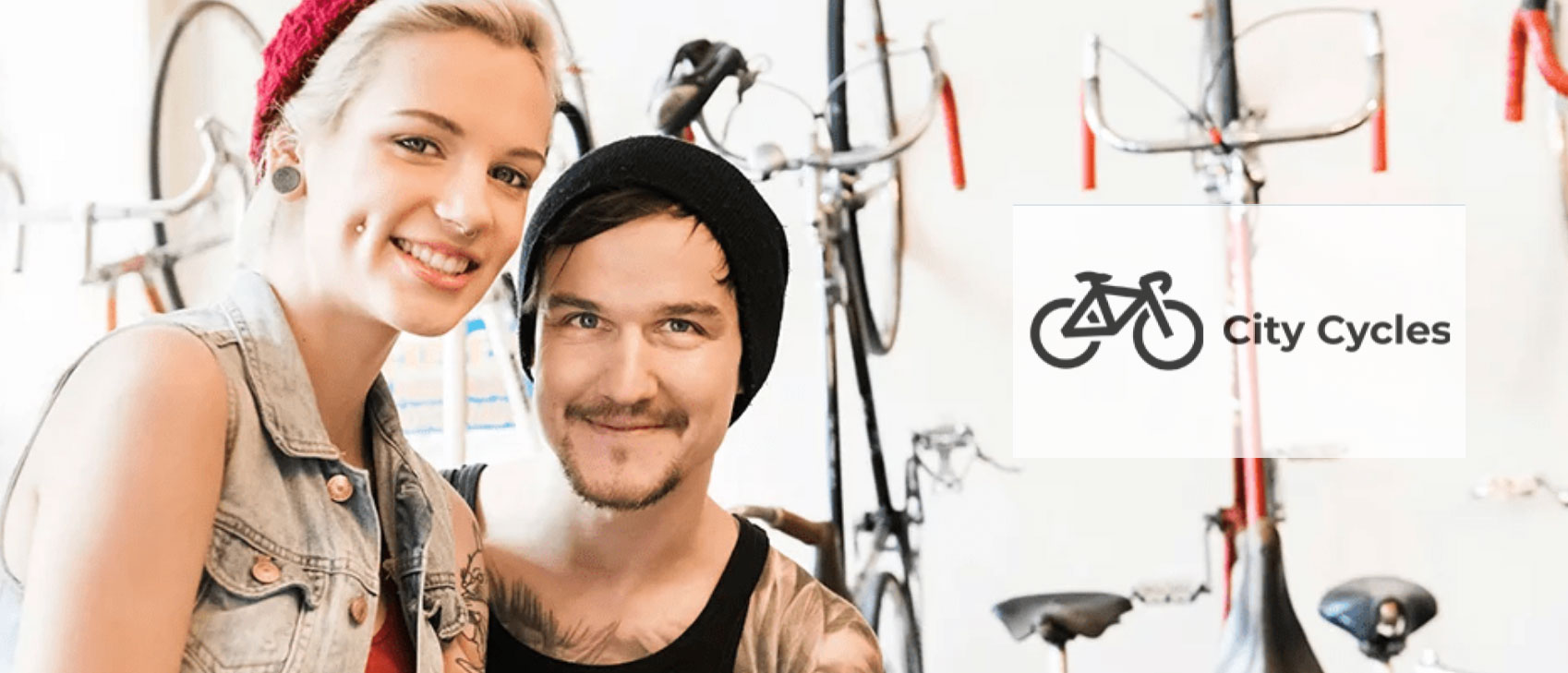
Overview
UX IA and prototypes for a website feature redesign concept to improve user experience of an existing bike rentals company website. The objective is to enhance specifically the site navigation and reservation feature, making the interaction with the online process more user friendly and easier to use, ultimately increasing the online reservation rate. This project is an expansion of my City Cycles UX Research Case Study.
My Role
Plan and organize site content structure in line with information architecture best practices to create a clickable, digital prototype. This involved building a new user friendly structure using universal design principles and iterative design from low fidelity wireframing and task flows based around user requirements, to high fidelity mockups and interactive prototyping, as well as further user testing and feedback.
The Problem
Rentals have been diminishing and the research suggested that the lack of online reservations and the confusing user experience was related to the inefficient website user interface and lack of user centered design within the online booking process. There was customer frustration with back and forth emailing in attempt to confirm booking, and customers were inevitably contacting or visiting the shop in person to complete the reservation process, impacting overall customer service.
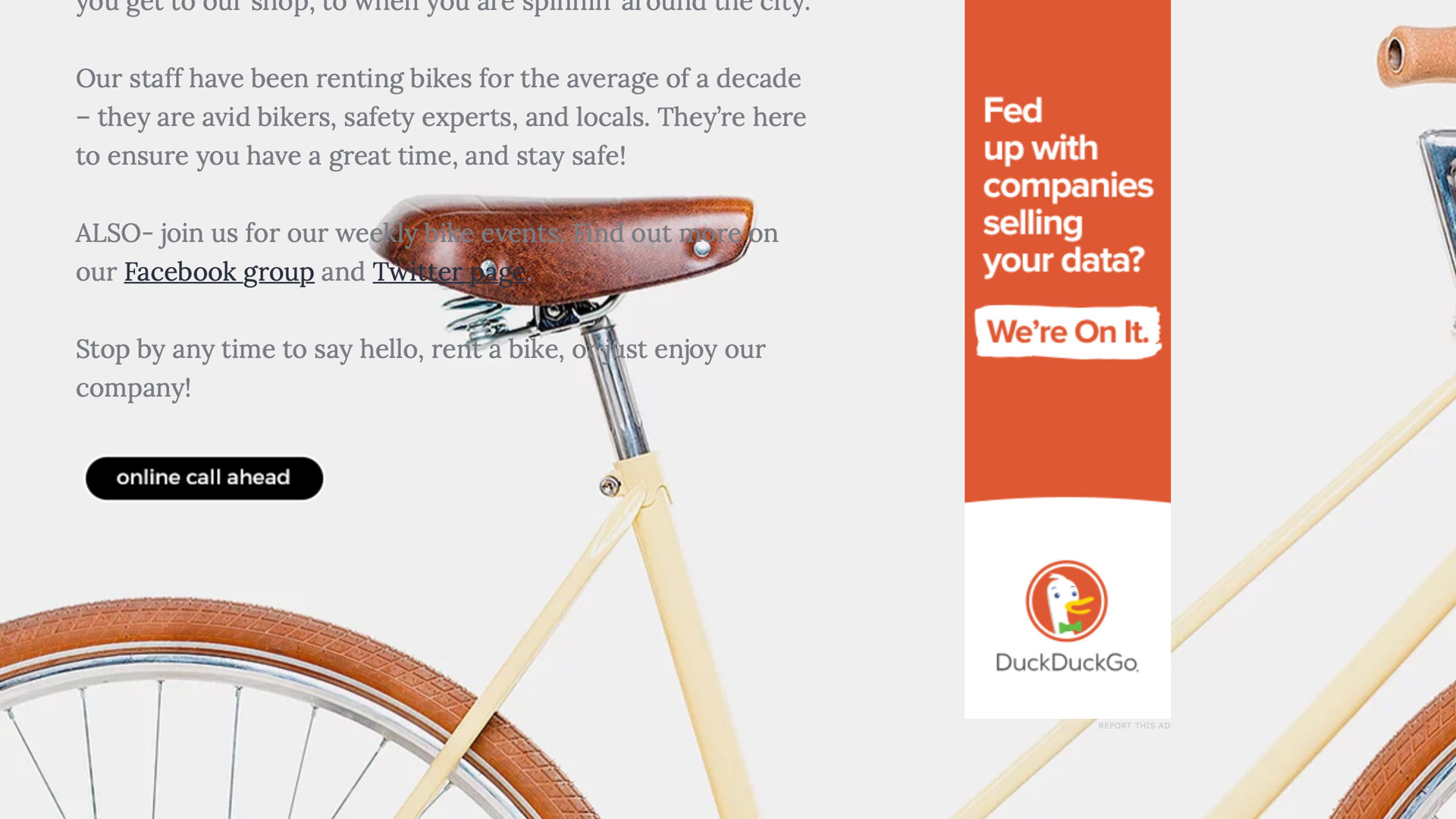
Old webpage with vague reservation link to email
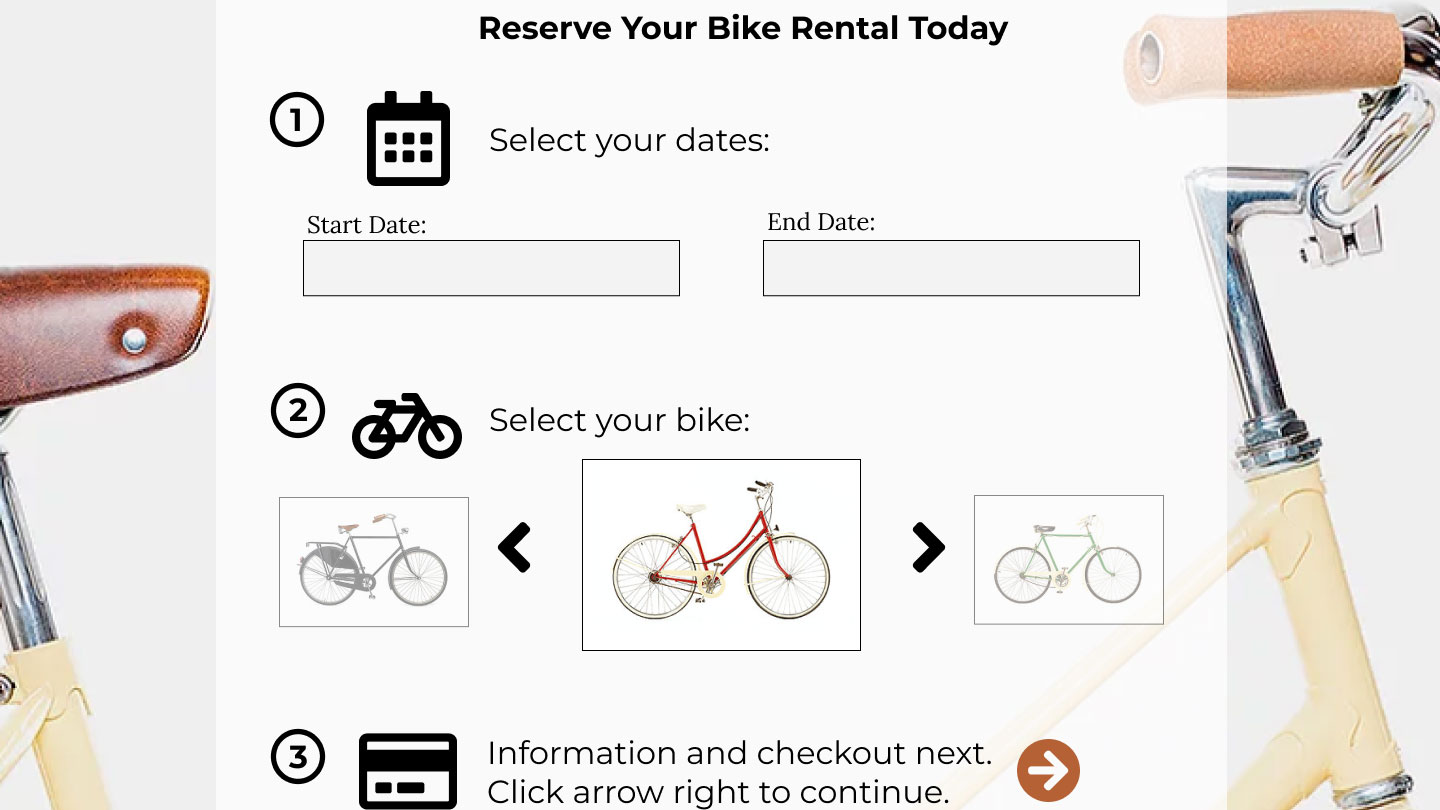
New webpage design with easy online process
The Solution
Redesign aspects of the website in order to clarify the purpose of the site by making the reservation button more prominent and increasing the usability of the booking feature. Design a more intuitive primary navigation that users can easily navigate throughout the site, allowing them to efficiently interact with the site features and encouraging more of them to conveniently book their reservations online.
Skills Utilized
Information Architecture
Usability & Universal Design
Wireframing
Digital Prototyping
User & A/B Split Testing
Iterative Design
Tools Used
Figma
InVision
Adobe
Slack
Google Drive

Information Architecture
Foundation of UX
IA is the structural plan for building a user-friendly experience, organizing, labeling, and arranging site content. The method explores and guides site structures like the sitemap, navigation and labeling of the site, providing a foundation for the user experience, and is actually designed for both human users and computer search engines. I chose the classic hierarchical IA model as the boilerplate to build an improved site structure. The IA model defines the relationship between other parts of the site and informs the sitemap, starting with the homepage, then the main pages, ranked by importance and organized based on the user’s needs.
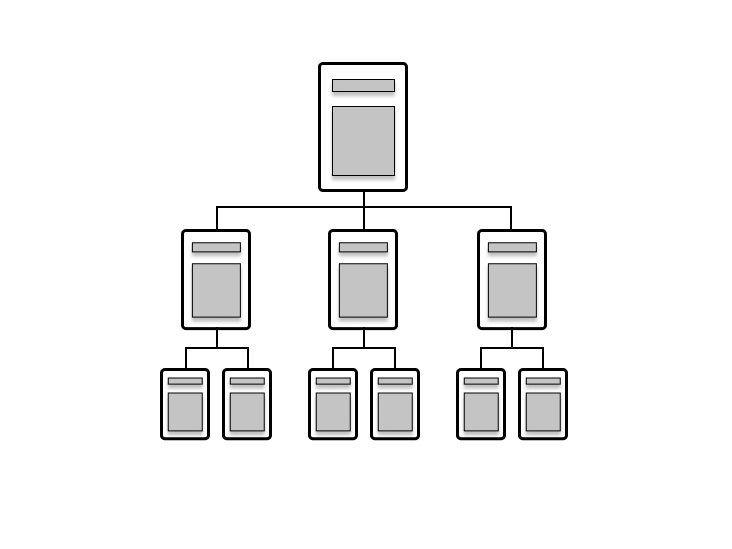
Hierarchical IA Model I made in Figma
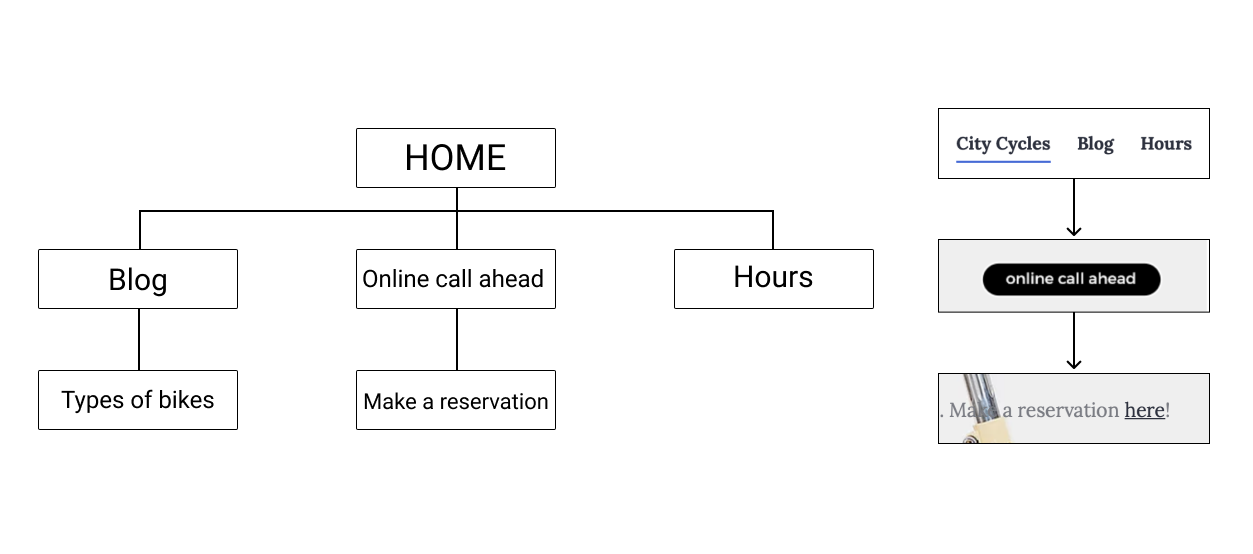
City Cycles' current site structure
Documenting the current site content of the website gave a clear visualization of of its structure, with the goal here to show all the information on the site, how it’s organized, and how the information is presented to users. Reviewing City Cycles sitemap and their content structure revealed some of the issues inherent within it that may be causing confusion for the users.
Content Strategy
Exploring the information architecture involves helping the user understand their surroundings, find what they’re looking for, and accomplish what they intend to do. Part of this involves organizing things in intuitive ways using the process of content strategy, and creation of visual designs and prototyping solutions. UX theory, research and data determine which pages to include for the navigation, which provides the wayfinding clues for users to get around on the site.
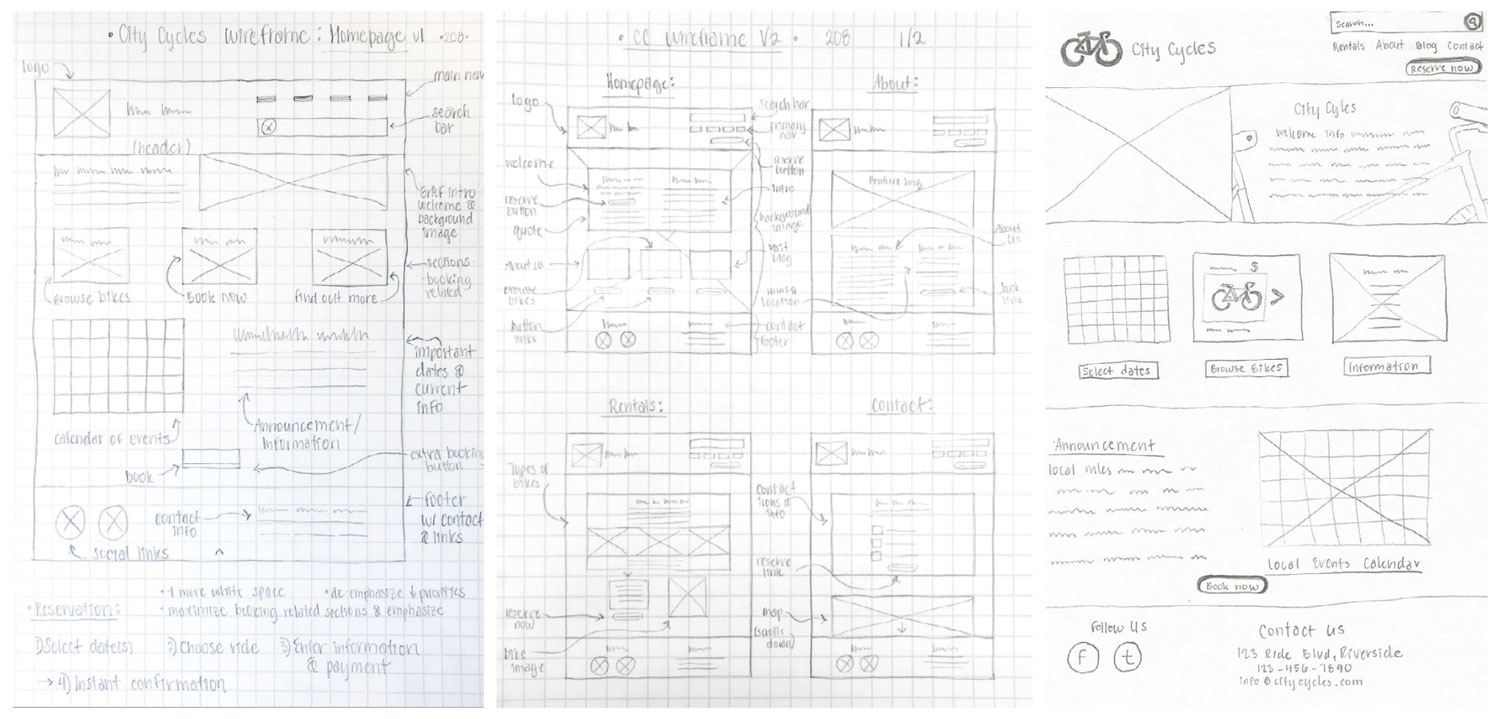
Wireframe Versions and Content Layout Sketches
Inclusive Design
Improving usability is making a quality design that is intuitive and easy for users to learn and use. Accessibility is being mindful of users with limitations or disabilities. For example, ensuring there is enough visual contrast for colorblind users. Universal design philosophy and practice takes all users into consideration from the start, including users with different levels of ability.
Clear labels help human users, screen readers, and search engines, while a clean, readable font with adequate contrast against the background and careful imagery contribute to inclusive design. After implementing universal design features, trunk testing can be performed as a strategy for determining how easy it is to use and to navigate.
Sitemap and Content Organization
Implementing the hierarchical IA model and a redesigned primary navigation would make the site user-focused, offering features like easier access to booking, a more efficient reservation process, and a more user friendly site navigation. Sitemaps show the site scope and number of pages, how the navigation links to pages and how they link to each other, and the order in which people see content. An improved nav would have a more prominent booking link that the user didn’t have to search for, and would better organize, clarify, and prioritize site content users are seeking.
I performed a card sorting exercise to discover how to best organize the content on the site in ways that are intuitive to the end user. This is where I put myself in the user’s shoes, took all the content topics City Cycles wanted to include on their website, and sorted them into main page categories in a way that made sense. There were some content topics that I placed onto the blog posts page, but I included the primary and secondary topics in the new sitemap version. I placed the social links and some basic contact information into the footer, and I relocated the reservation button to a prominent static location within the header so that it is accessible from any page on the site. Also, the City Cycles logo will link back to the home page from any of the site pages.
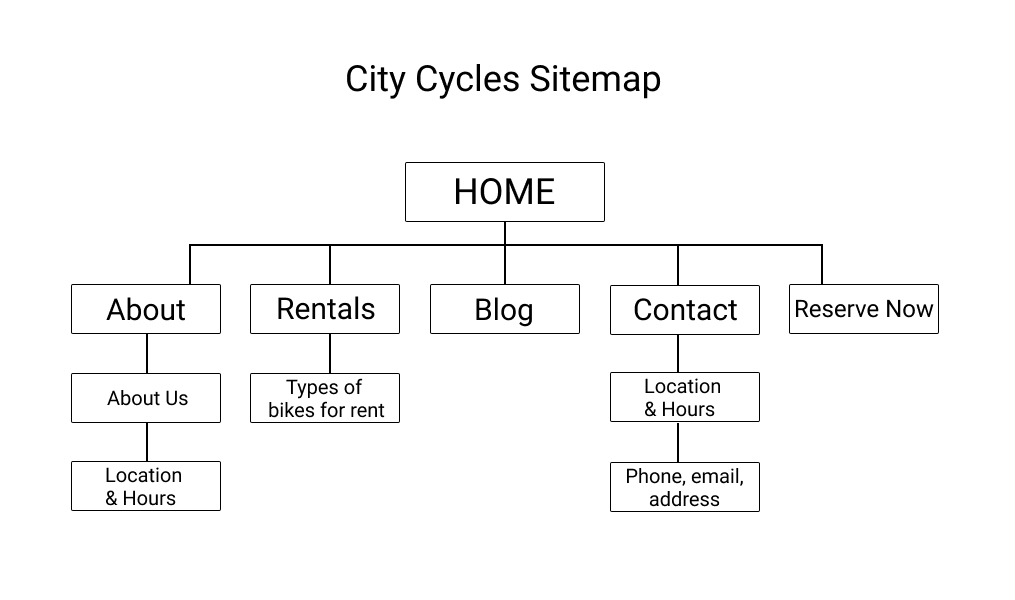
New and Improved Sitemap
User Flow
In the planning phase of the site design, user flows help to better grasp the options to provide the users with and to assist in delivering a product that meets their needs. They help anticipate what steps users will take so that potential problems can be caught before designing begins. The user flow is a flowchart-style visual outline of what the users see, do, and experience during a specific process while using the site, and they focus on a specific task at hand. They show the screens a user could see from one point to the next, and map out how they might get there, and the possible detours using flow chart-like elements.
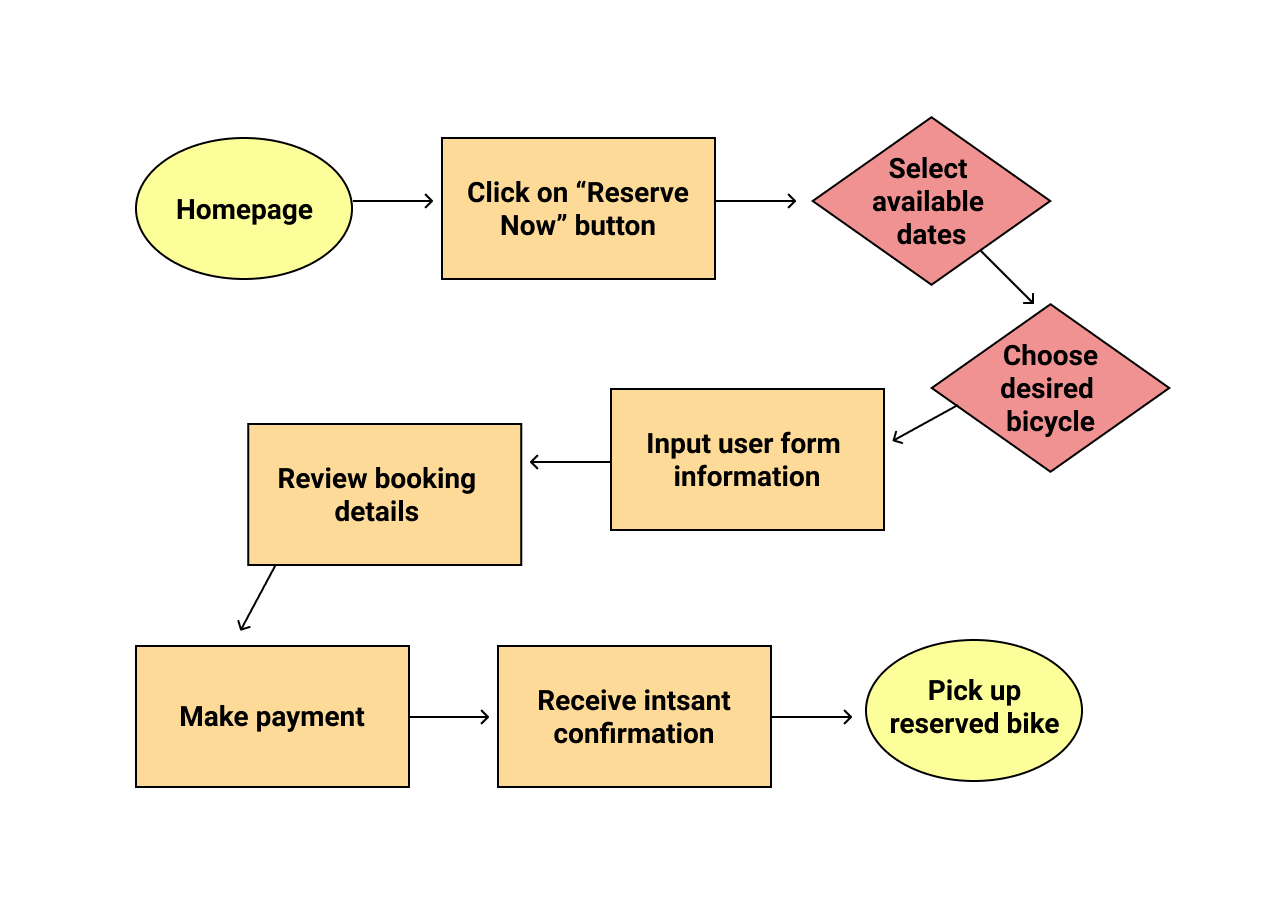
Updated User Flow
Walking through the user flow of the existing City Cycles website, it quickly became clear there was room for improvement. Review of user interaction data confirmed this. I created a new user flow, implementing my own design ideas to improve the reservation process.
I also worked through prioritizing content for mobile first development by identifying top features to include on mobile versions, which include contact details, bicycle reservation form link, and the location and hours. With the structure in place, I was ready to progress with the design beginning with paper wireframes, to a static mockup, to a digital draft of the site, adding more detail and elements to finally a clickable prototype users can interact with like a real website.
Wireframes and Prototypes
Wireframing
Low-fidelity wireframes have a threefold focus on core UX, layout and flow features. This starts the design out as a small and simple rough idea with low detail using placeholders, then iterates through experimental versions for each page of the site.
The wireframes were then converted from paper sketch to lo-fi digital wireframes in Figma. Next, design details were added to build the prototype and a UI kit was incorporated into the user interface to help efficiently prepare elements and design patterns.
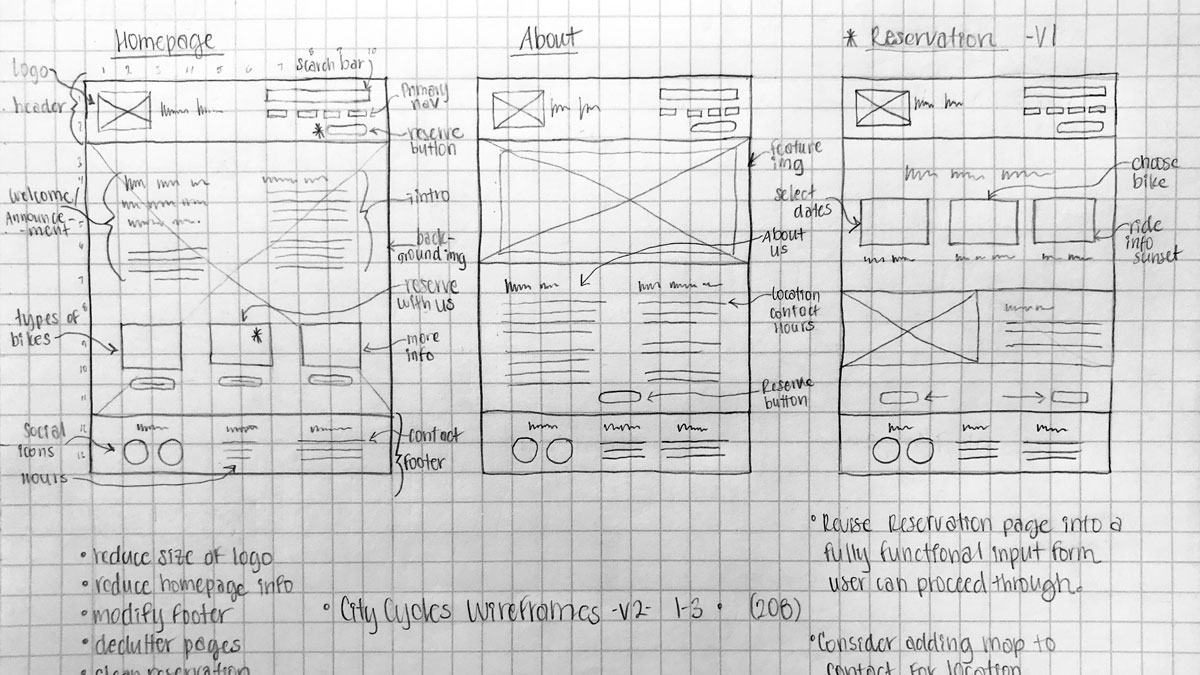
Wireframe Sketches of Primary Pages
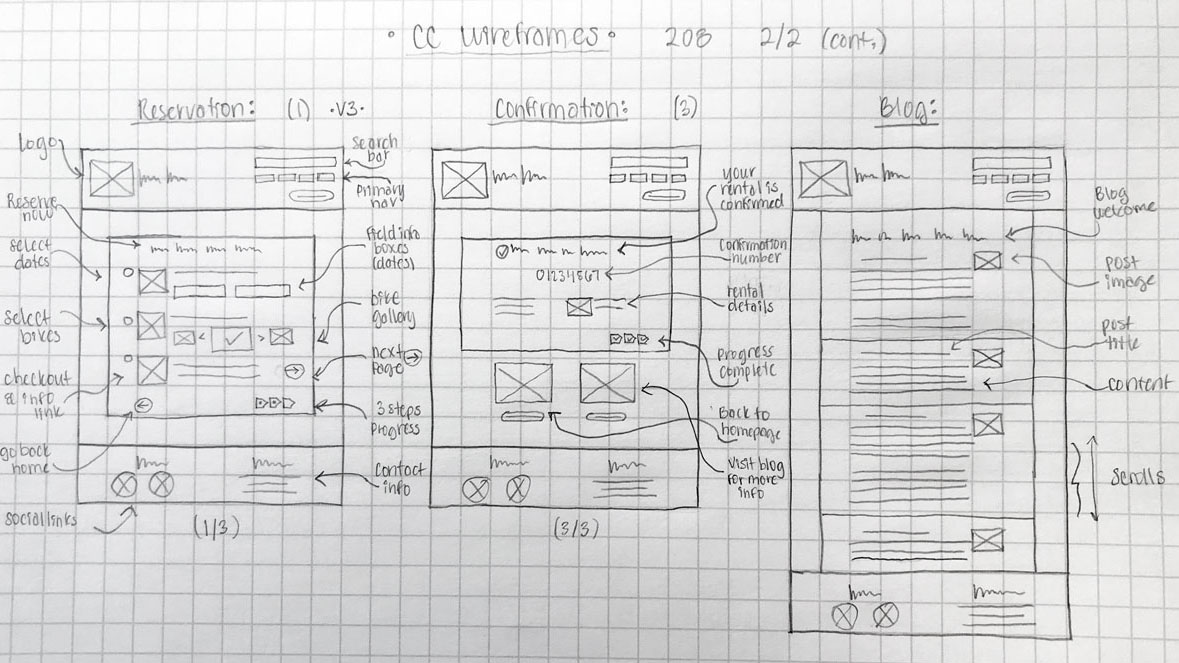
Wireframe Sketches of Secondary Pages
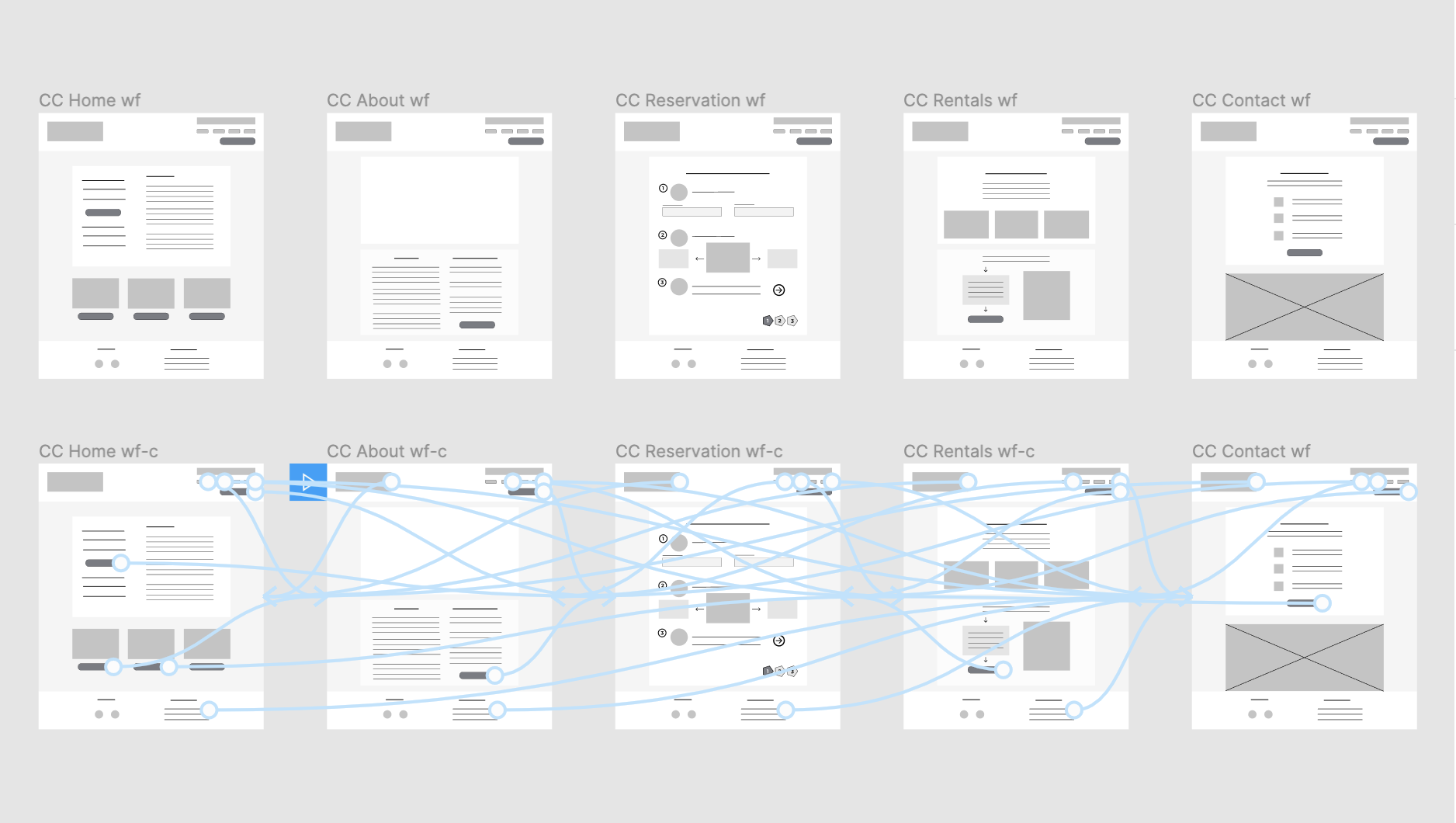
Low Fidelity Wireframes and Task Flows
Design Theory
So far I’ve been using data to help qualify decisions throughout the research and design process. The collection of fundamental guidelines called design theory involves incorporating visual design elements such as line, color, value, texture, form, and space, and design principles like size, emphasis, balance, contrast and how the elements communicate to the user. Particularly here I evaluated the design of the search bar on the City Cycles website, then prescribed a potential solution using design theory.
City Cycles site users were struggling to find the search bar when they needed it and they were having difficulty using the main site navigation in general, causing a lot of confusion. Following the design principle of emphasis I decided to make the search bar, a really important link, bigger and more prominent and I also incorporated some contrast to boost the user-friendliness of this aspect of the website.
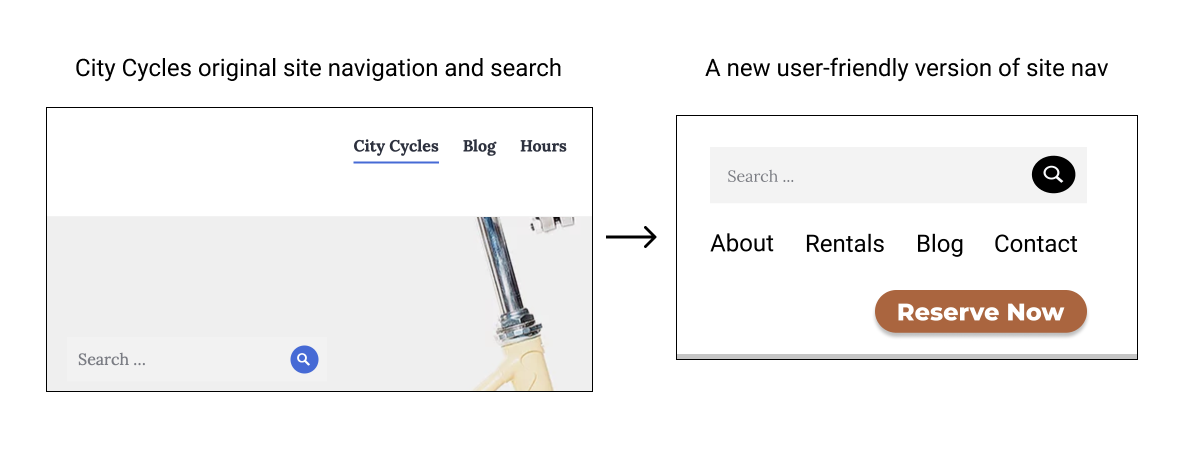
Design Patterns
I explored industry standard design patterns, layouts, and time-saving UX tools and decided some of the most helpful patterns for the City Cycles website would be the addition of guided steps throughout the registration process, as well as a home link to transport the user directly to the home page from the logo. Another design pattern I would recommend for the site is form feedback to complete a required component of a form, along with form hints in the fields.
Prototyping
To the low fidelity digital mockups I added styling and design elements, and began prototyping to simulate the user’s experience of the site in order to test and refine it before launching. Reviewing the user flow was a good starting point for the prototypes because it helped to visualize each page the user sees, giving an idea of what pages and visual elements needed to be included in the prototype.
For effective UX testing, the high-fidelity or “hi-fi” prototype should closely match the look and functionality of the real site, immersing users in the experience of using the site so they can provide quality feedback on it. The design platform I used to create the hi-fi interactive prototype was the industry-standard InVision digital prototyping tool. Users can interact with the clickable prototype like a real website.
View the Interactive Prototype
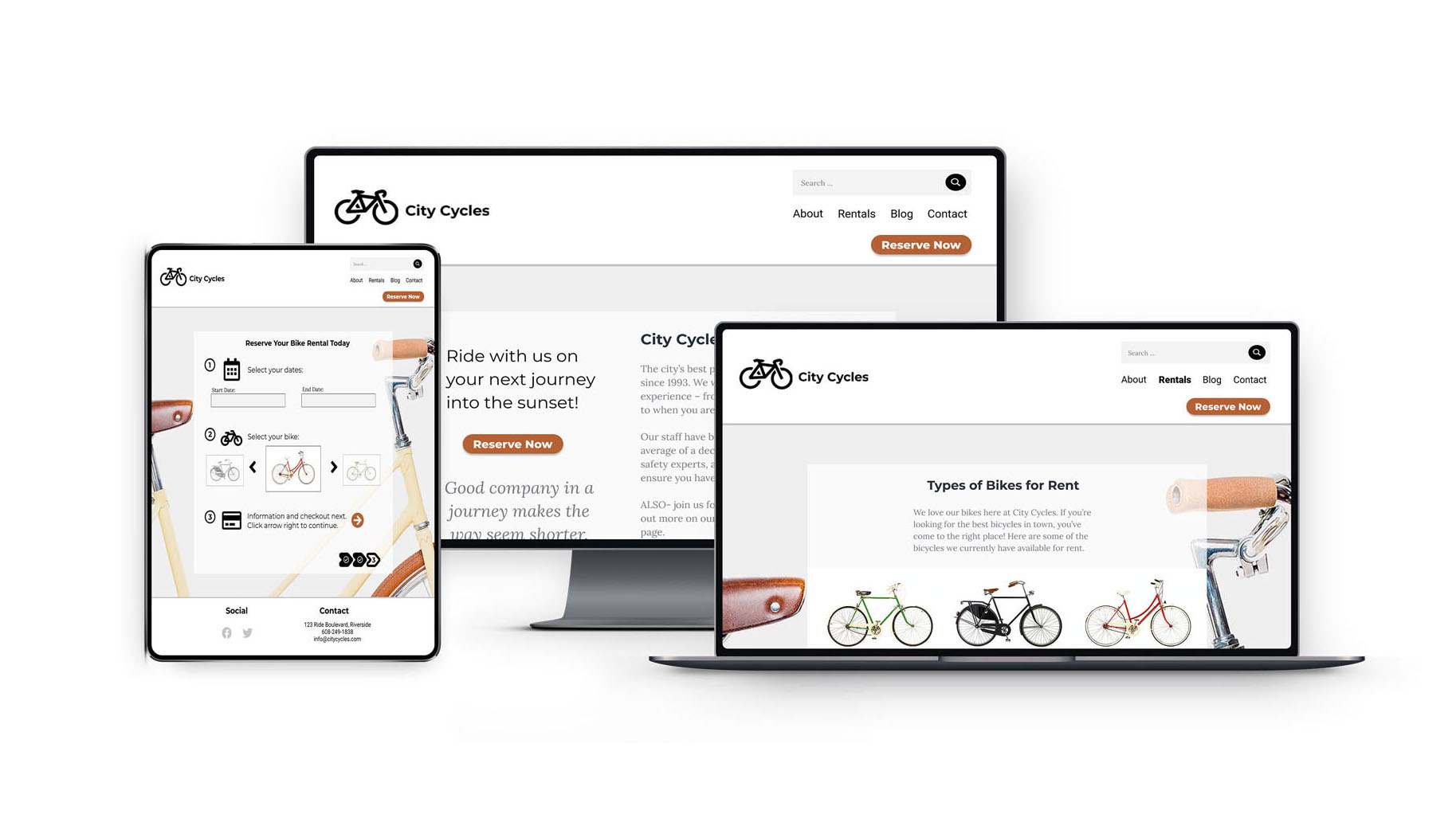
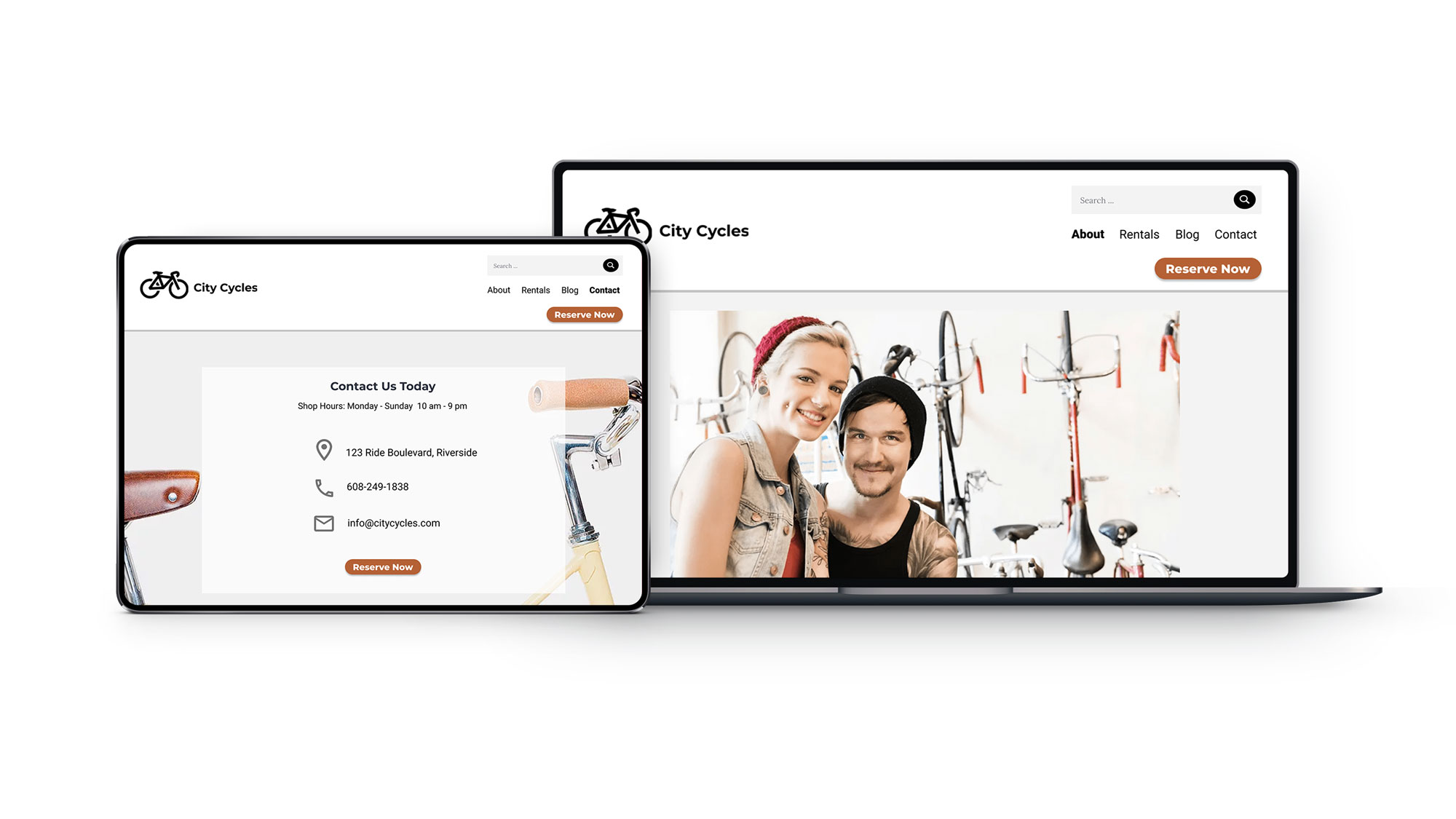
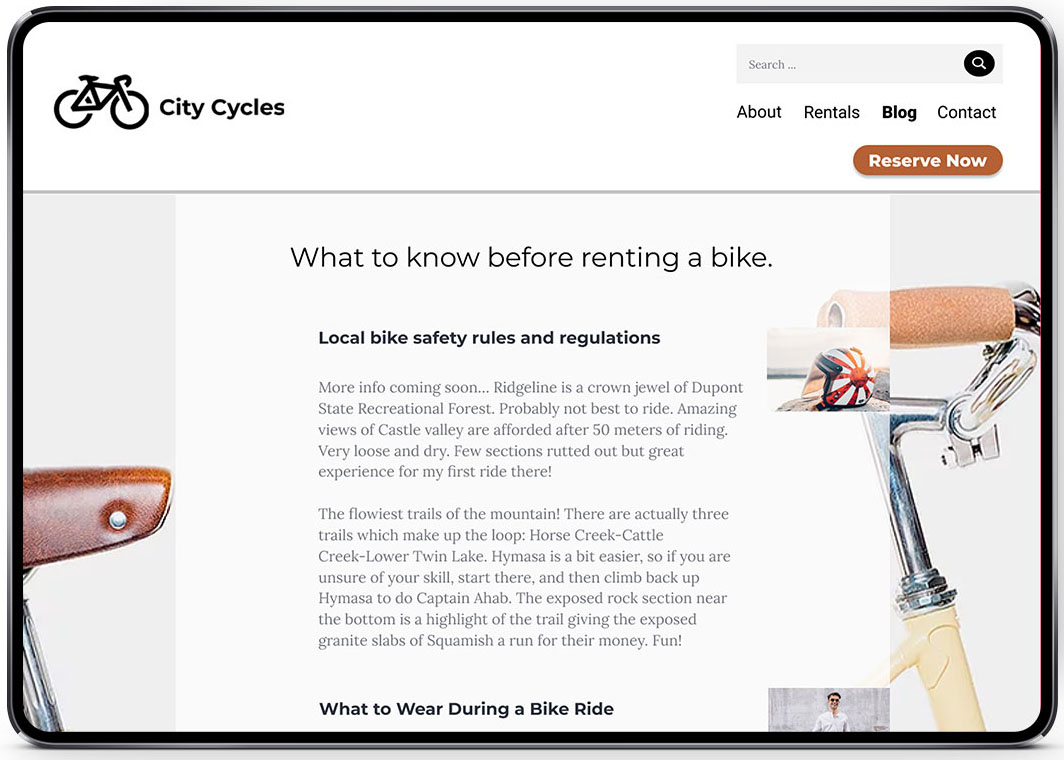
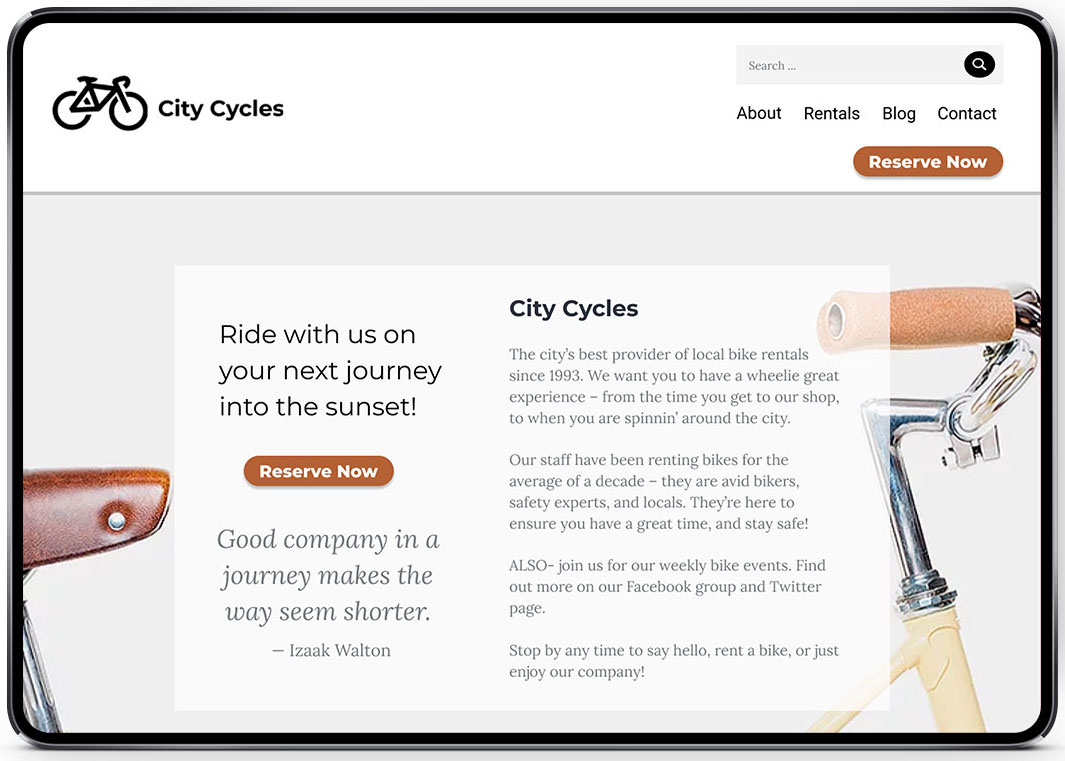
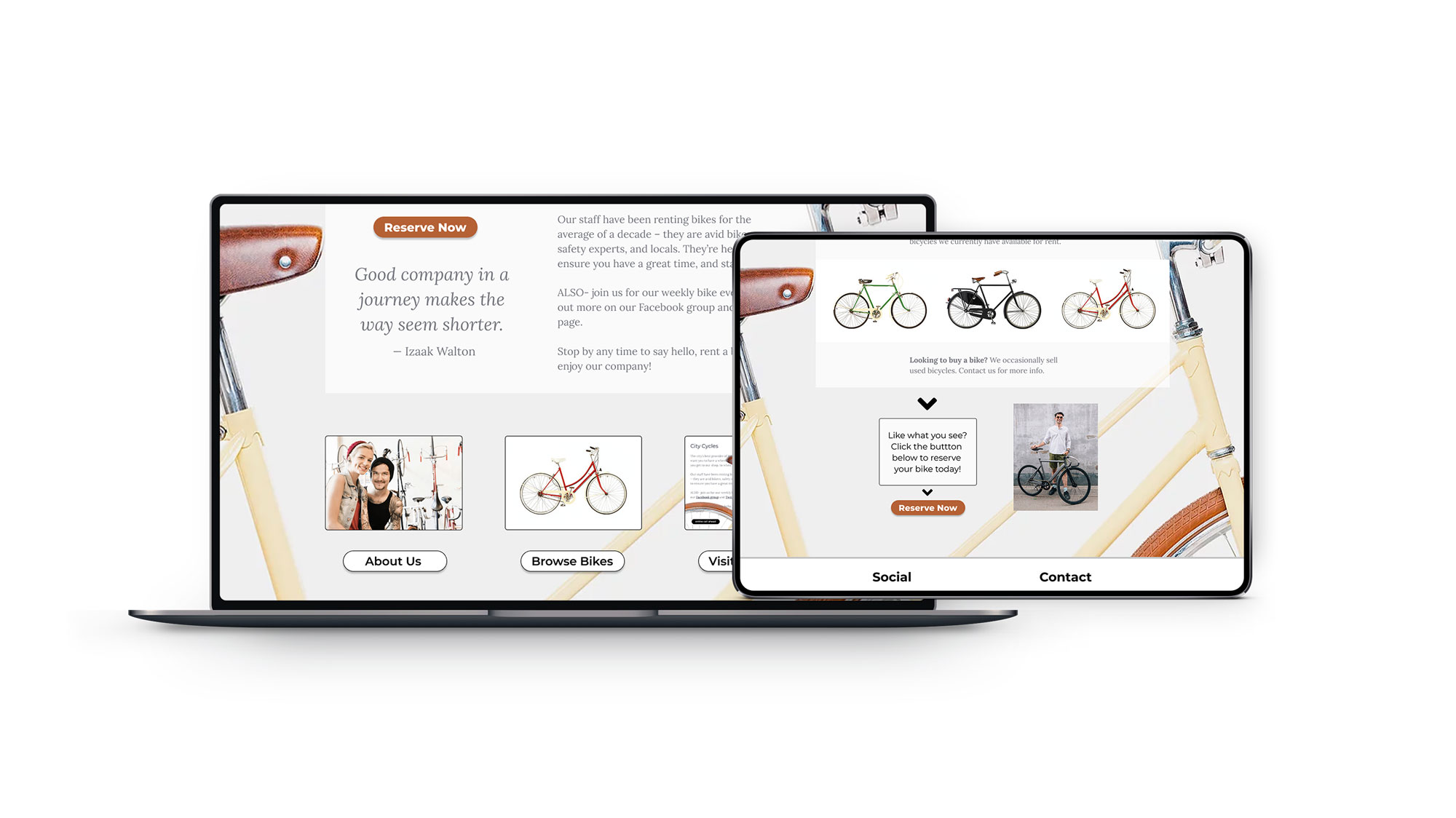
Advocating for UX
Implementing UX research ensures getting the solution right the first time, thereby reducing the risk and cost of failure, since testing is performed before launching a product. It’s easier to fix a prototype than it is to fix an entire custom-coded website, saving time, money, and risk to a company. UX research means standing up for your user, and backing up your recommendations with data and facts. Feedback can be implemented through iterative design improvements strategically based on user findings.




